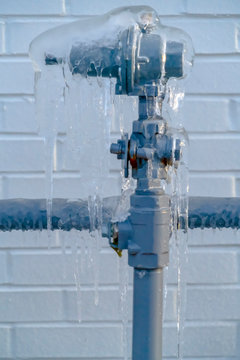Tips to Safeguard Your Plumbing from Freezing: Essential Strategies
Tips to Safeguard Your Plumbing from Freezing: Essential Strategies
Blog Article
Presented here on the next paragraphs you can discover a good deal of really good insight involving Prevent Frozen Pipes .

Cold weather can wreak havoc on your pipes, specifically by freezing pipelines. Right here's how to prevent it from happening and what to do if it does.
Intro
As temperatures decline, the threat of frozen pipes rises, possibly resulting in costly fixings and water damage. Recognizing exactly how to prevent frozen pipelines is crucial for property owners in chilly climates.
Recognizing Icy Pipelines
What triggers pipes to freeze?
Pipelines ice up when subjected to temperatures below 32 ° F (0 ° C) for expanded durations. As water inside the pipes ices up, it broadens, putting pressure on the pipeline walls and possibly triggering them to burst.
Threats and problems
Frozen pipelines can cause supply of water disruptions, residential or commercial property damages, and costly fixings. Burst pipelines can flooding homes and create comprehensive architectural damages.
Signs of Frozen Piping
Identifying frozen pipelines early can stop them from bursting.
Just how to identify frozen pipes
Try to find lowered water flow from faucets, unusual smells or sounds from pipelines, and visible frost on exposed pipes.
Prevention Tips
Insulating at risk pipelines
Wrap pipes in insulation sleeves or use warmth tape to secure them from freezing temperatures. Focus on pipes in unheated or external areas of the home.
Heating strategies
Keep interior areas properly heated up, specifically locations with plumbing. Open cupboard doors to allow cozy air to distribute around pipelines under sinks.
Securing Outdoor Plumbing
Yard hose pipes and exterior faucets
Separate and drain yard hoses before winter months. Install frost-proof faucets or cover outdoor taps with shielded caps.
What to Do If Your Pipes Freeze
Immediate actions to take
If you believe frozen pipes, keep taps open to ease stress as the ice melts. Utilize a hairdryer or towels taken in warm water to thaw pipelines gradually.
Long-Term Solutions
Structural adjustments
Think about rerouting pipes away from exterior wall surfaces or unheated areas. Include added insulation to attic rooms, cellars, and crawl spaces.
Updating insulation
Buy high-quality insulation for pipes, attics, and wall surfaces. Correct insulation aids keep constant temperature levels and lowers the danger of frozen pipes.
Conclusion
Preventing icy pipelines needs proactive measures and fast actions. By comprehending the causes, signs, and safety nets, property owners can protect their pipes during winter.
6 Proven Ways to Prevent Frozen Pipes and Protect Your Home
Disconnect and Drain Garden Hoses
Before winter arrives, start by disconnecting your garden hoses and draining any remaining water. Close the shut-off valves that supply outdoor hose bibs and leave the outdoor faucet open to allow any residual water to drain. For extra protection, consider using faucet covers throughout the colder months. It’s also important to drain water from any sprinkler supply lines following the manufacturer’s directions.
Insulate Exposed Pipes
Insulating your pipes is an effective way to prevent freezing. Pipe insulation is readily available at home improvement stores and is relatively inexpensive. Pay close attention to pipes in unheated areas such as the attic, basement, crawl spaces, or garage. Apply foam insulation generously to create a buffer against the cold. You can also wrap your pipes in heat tape or thermostat-controlled heat cables for added warmth.
Seal Air Leaks
Inspect your home for any cracks or openings that could let in cold air. Seal any holes around the piping in interior or exterior walls, as well as the sill plates where your home rests on its foundation. Additionally, make sure to keep your garage door closed unless you’re entering or exiting. Leaving it open creates a significant air leak that can lead to frozen pipes.
Allow Warm Air Circulation
During cold snaps, it’s essential to allow warm air to circulate evenly throughout your home. Leave interior doors ajar to promote better airflow. Open kitchen and bathroom cabinets to help distribute heat consistently around the rooms. If you have small children or pets, be sure to remove any household chemicals or potentially harmful cleaners from open cabinets for safety.
Let Faucets Drip
A small trickle of water can make a big difference in preventing ice formation inside your pipes. When temperatures drop significantly, start a drip of water from all faucets served by exposed pipes. This continuous flow helps prevent the water from freezing. Additionally, running a few faucets slightly can relieve pressure inside the pipes, reducing the chances of a rupture if the water inside does freeze.
https://choateshvac.com/6-proven-ways-to-prevent-frozen-pipes-and-protect-your-home/

As a devoted reader on Helpful Tips to Prevent Frozen Pipes this Winter, I was thinking sharing that piece of content was worth the trouble. Don't hesitate to set aside a second to share this post if you appreciated it. Thank-you for your time spent reading it.
Book Today! Report this page